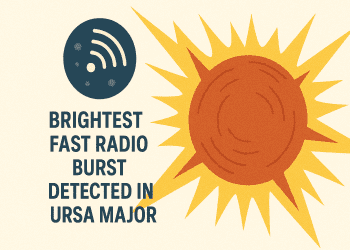The NASA/ESA Hubble Space Telescope’s latest Picture of the Week showcases NGC 2775, a galaxy 67 million light-years away in Cancer, defying traditional classification. This celestial body blends a gas-free, smooth center typical of elliptical galaxies with a dusty, star-clustered ring reminiscent of spirals. Its hybrid nature, possibly lenticular, sparks intrigue as astronomers debate its true identity, visible only from one angle. The galaxy’s feathery ring suggests spiral traits to some, while others see lenticular features bridging elliptical and spiral worlds, leaving its origin shrouded in uncertainty.
Lenticular galaxies like NGC 2775 may arise through diverse paths. They could be spiral galaxies that merged with others, losing star-forming gas and spiral arms, or elliptical galaxies that gathered gas into a disk. Evidence points to a violent past: a faint hydrogen gas tail, invisible in Hubble’s image, stretches nearly 100,000 light-years around NGC 2775. This tail likely marks the remnants of galaxies absorbed after close encounters, stretched apart by gravitational forces. Such mergers could explain the galaxy’s peculiar structure, a testament to cosmic collisions shaping its current form.
The new Hubble image, building on a 2020 release, incorporates observations of red light emitted by hydrogen clouds around massive young stars. This addition highlights active star formation, adding layers to NGC 2775’s complex history. Unlike its earlier portrait, this version unveils hidden dynamics, suggesting ongoing evolution. ESA/Hubble’s data hints at a galaxy forged through turmoil, where past mergers left indelible marks. The unseen tail and fresh stellar activity weave a narrative of resilience, offering a glimpse into the forces that sculpt the universe’s vast tapestry.
This discovery underscores the unpredictable nature of galactic evolution. NGC 2775’s blend of traits challenges existing models, prompting researchers to explore how such hybrids form. The hydrogen tail, a silent witness to absorbed neighbors, hints at a history of gravitational battles, while new stars signal a future of renewal. Hubble’s enhanced imaging, per ESA, peels back layers of this cosmic puzzle, revealing a galaxy that stands as both a relic and a work in progress. These insights deepen our understanding of lenticular galaxies, fueling speculation about unseen processes driving their creation.
Beneath the visible splendor, NGC 2775 harbors secrets of its violent past and potential future. The interplay of mergers and star birth suggests a galaxy adapting to its history, with each new observation uncovering more. ESA/Hubble’s ongoing work promises to illuminate these concealed mechanisms, offering a window into the universe’s dynamic evolution. As astronomers piece together its story, NGC 2775 emerges as a key to unlocking broader cosmic mysteries, where every light-year holds a tale of transformation and endurance.







